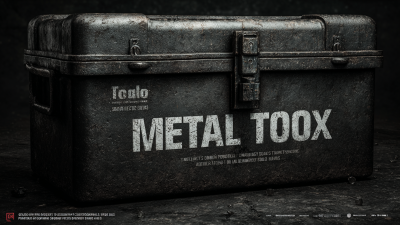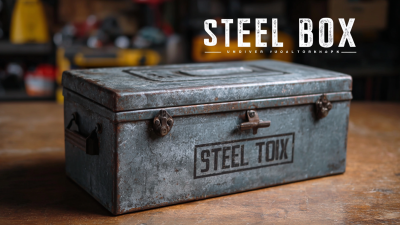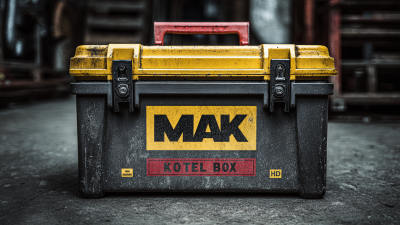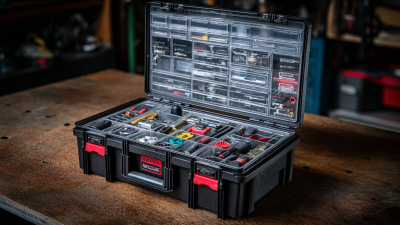In today's fast-paced world, the demand for durable and reliable storage solutions has never been greater, particularly in the realm of industrial and commercial tools. According to a recent report by the Freedonia Group, the tool storage market is expected to reach $4.5 billion by 2025, driven by the increasing need for efficient organization and protection of valuable tools. Among the myriad options available, the steel tool box stands out as a top choice for professionals and DIY enthusiasts alike, offering unmatched strength and longevity. However, selecting the right steel tool box requires careful consideration of various factors such as size, design, and security features. In this guide, we will present five essential tips to help you choose the best steel tool box that meets your specific needs, ensuring that your tools are stored safely and conveniently.
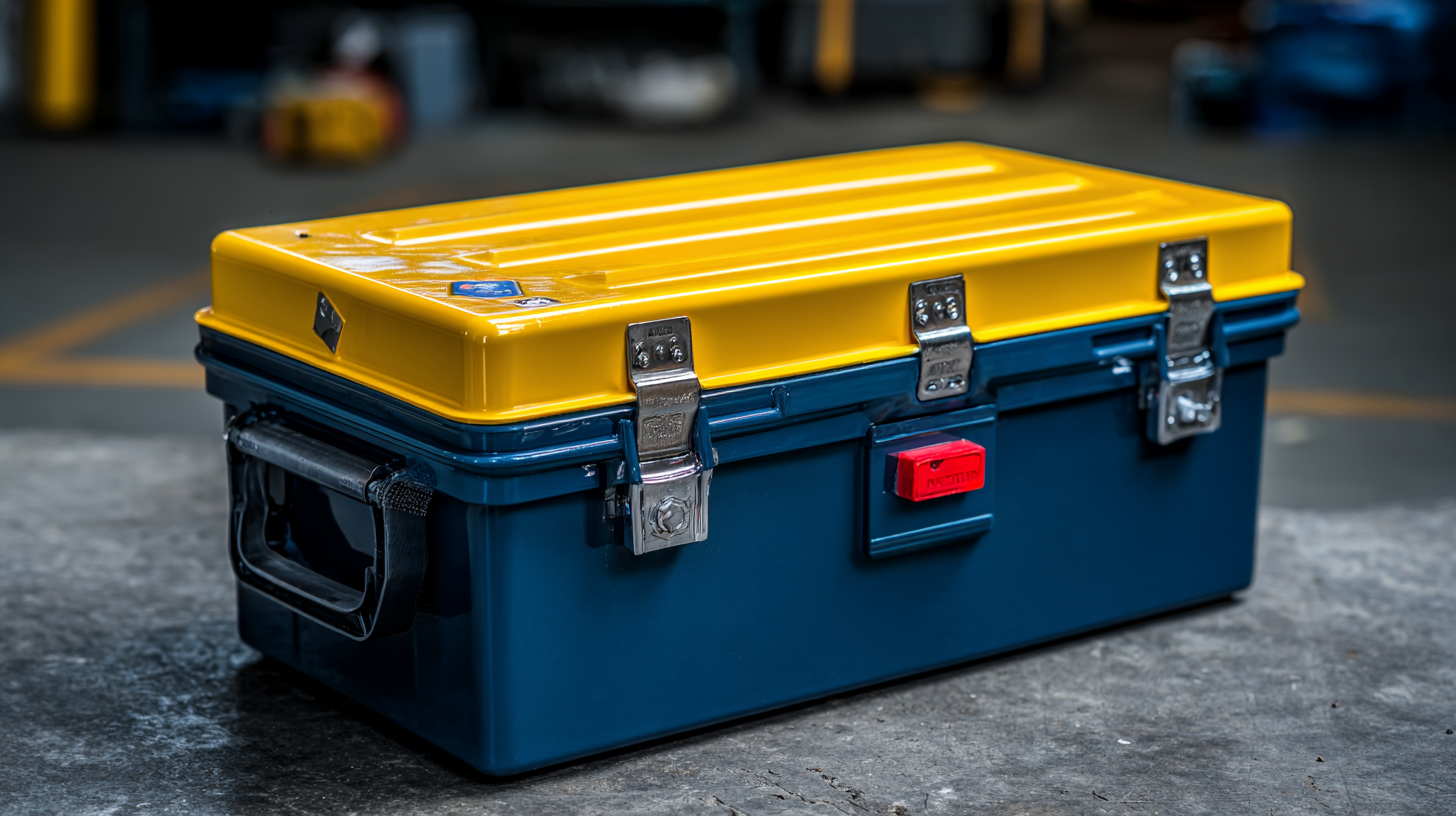
When it comes to selecting the right steel tool box, determining the ideal dimensions is crucial. The size of your tool box should not only accommodate your current tools but also provide space for future additions. Start by evaluating your collection of tools—measure their lengths and widths to get a clear idea of what you have and what you'll need. This will help you avoid purchasing a box that is either too small or unnecessarily large.
Additionally, consider your workspace conditions. If you have limited space in your garage or workshop, a compact toolbox may be more suitable. On the other hand, if you often engage in large projects, opting for a larger tool box with multiple compartments can enhance your organization and accessibility. Remember to think about portability; a tool box that is too heavy or bulky can be cumbersome to move around. By carefully assessing these factors, you’ll be better equipped to choose a steel tool box that meets your needs and makes your projects more efficient.
| Dimension (Inches) | Tool Box Size | Storage Capacity (Cubic Feet) | Weight (lbs) | Recommended Use |
|---|---|---|---|---|
| 20 x 12 x 12 | Small Tool Box | 2.0 | 10 | Home DIY |
| 24 x 16 x 16 | Medium Tool Box | 4.0 | 15 | Professional Use |
| 30 x 18 x 18 | Large Tool Box | 6.5 | 25 | Construction |
| 36 x 20 x 20 | Extra Large Tool Box | 10.0 | 35 | Industrial Use |
When it comes to selecting the ideal steel tool box, understanding steel grades is crucial for ensuring durability and strength. Steel is categorized into various grades, each offering unique properties that affect its performance and longevity. High-carbon steels, for instance, are renowned for their hardness and resistance to wear, making them an excellent choice for heavy-duty applications. However, this hardness can come at the cost of brittleness, so for tools that require impact resistance, medium-carbon steels may be a better option.
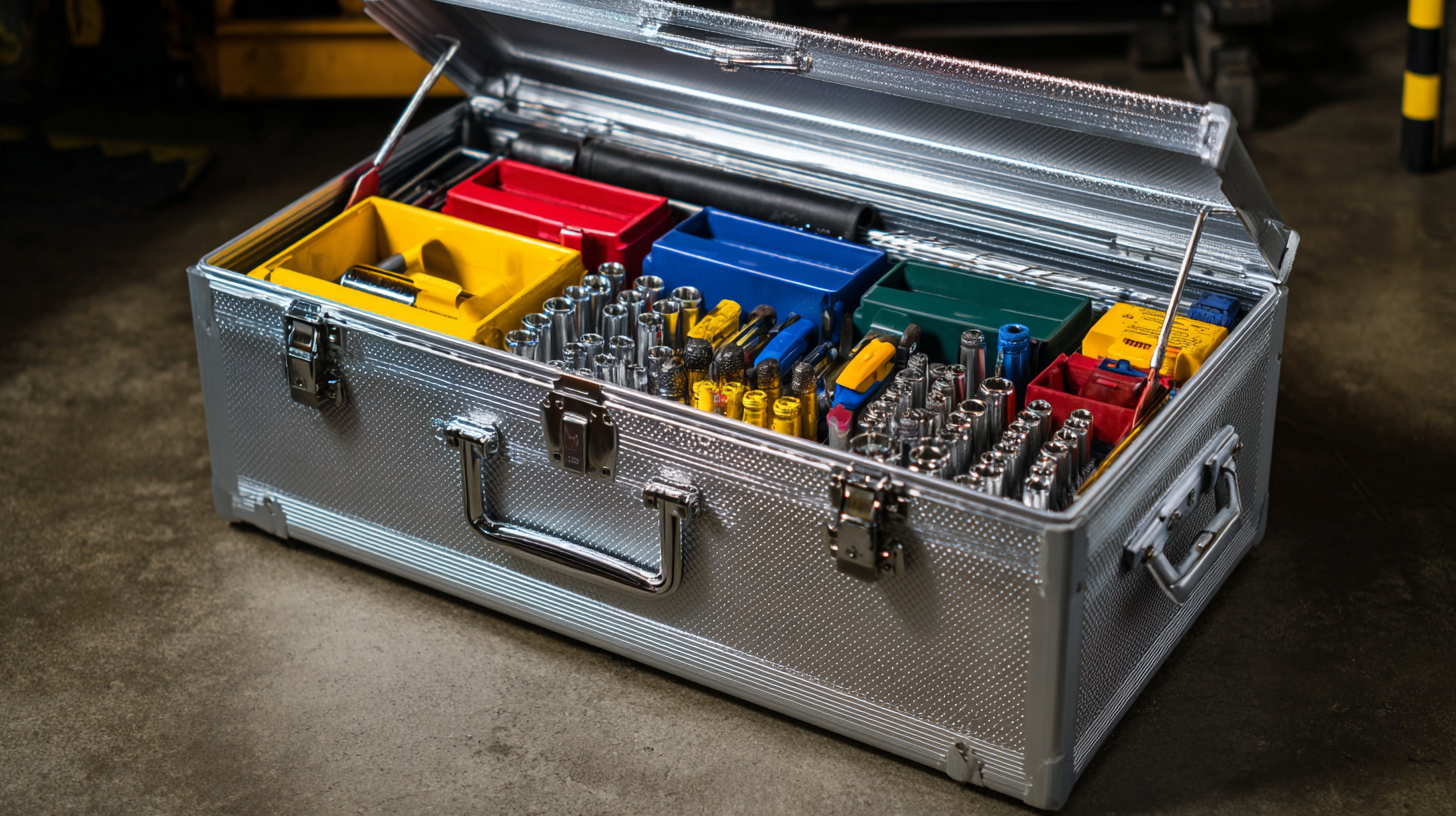
Stainless steel, with its impressive corrosion resistance, is another popular choice for tool boxes, especially in humid or outdoor environments. When selecting a tool box, it's essential to consider the tasks you'll encounter and choose a steel grade that aligns with those needs. Thicker steel typically translates to improved resistance against dents and impacts, enhancing the overall longevity of your tool box. By understanding the nuances of steel grades, you can make an informed decision that ensures your tool box will withstand the test of time and demanding conditions.
When selecting a steel tool box, organization and efficiency should be at the forefront of your decision-making. According to a report by Statista, approximately 62% of professionals note that efficient organization tools enhance their productivity on the job. Therefore, it’s crucial to seek steel tool boxes designed with features that cater to your specific needs. Look for modular designs that allow for flexibility and customization, enabling you to adapt the interior layout for varying tool sizes and types. Adjustable shelves and removable trays can significantly improve accessibility, reducing time spent searching for tools.

Additionally, consider durability and security features in your choice. A survey conducted by the American Tool and Hardware Association revealed that tool theft is a major concern, with 38% of tool owners reporting incidents in the past year. Opt for tool boxes with heavy-duty locks and reinforced corners to safeguard your investments. Features such as weather-resistant seals can also protect your tools from environmental damage, ensuring they remain in peak condition while you work efficiently. When you invest in a quality steel tool box with these essential features, you not only enhance your organization but also contribute to maintaining your tools' longevity and performance.
When it comes to selecting a steel tool box, cost-effectiveness is a critical factor that often gets overlooked. Investing in a high-quality steel tool box may seem like a splurge at first, but considering its long-term value can significantly shift your perspective. A durable steel tool box not only offers enhanced protection for your tools but also stands the test of time, with a lifespan that far exceeds that of cheaper alternatives. This longevity means you won’t need to replace your tool box frequently, saving you money in the long run.
Moreover, quality steel tool boxes often come equipped with features like reinforced locks, weather-resistant finishes, and organizational compartments. These elements can enhance convenience and efficiency when working on projects, ultimately contributing to higher productivity. By analyzing the initial cost against the potential for years of reliable use, investing in a premium steel tool box proves to be a financially sound decision for both professionals and DIY enthusiasts. The old adage, “you get what you pay for,” certainly rings true in the realm of tool storage, making it essential to prioritize quality over price when making your selection.
This chart illustrates the cost associated with different types of steel tool boxes, highlighting the investment required for each size and durability level. The data suggests a clear correlation between tool box size and cost, aiding in making a cost-effective decision for various needs.
When choosing the best steel tool box, prioritizing safety is crucial, which makes understanding locking mechanisms and security features essential. A reliable locking system protects your valuable tools from theft and unauthorized access. Look for boxes equipped with robust locks, like combination or keyed locks, that deter intruders. Some advanced models even feature electronic locks, providing an added layer of security that can be more convenient and secure than traditional options.
In addition to the locking mechanism, consider the overall build quality of the tool box. Reinforced hinges and treated steel construction can enhance security by making the box more difficult to break into. Features like anti-pry bars and tamper-resistant screws also contribute significantly to the box's durability. Moreover, for those who frequently work in remote locations, opting for a tool box with built-in security alarms can provide peace of mind. Investing in these safety features not only safeguards your tools but also ensures that your workspace remains organized and secure.
